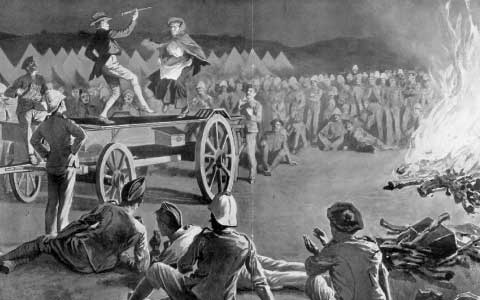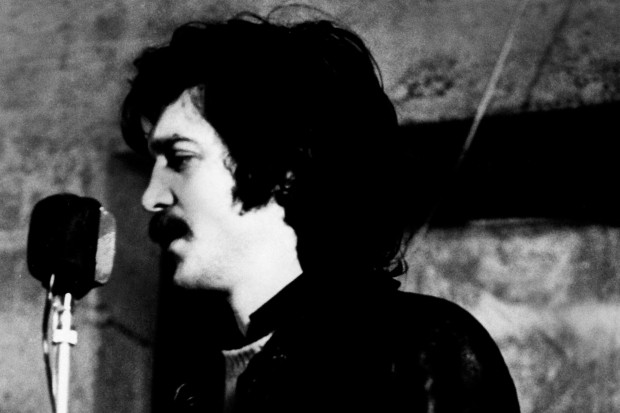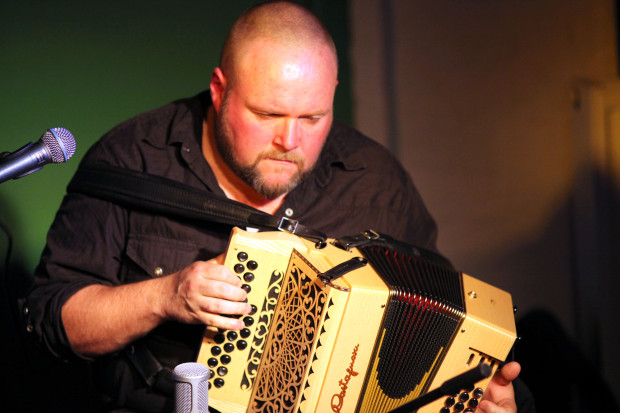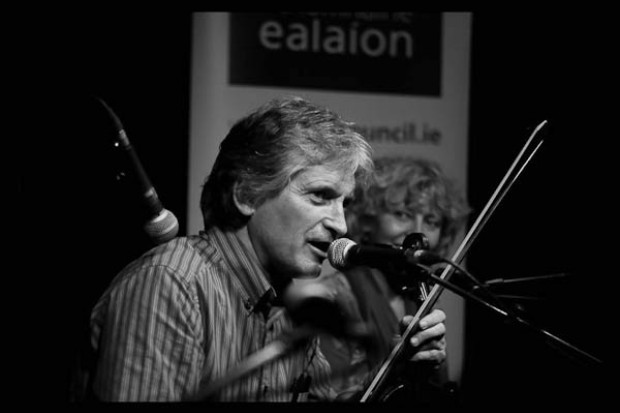
Irish Step Dance in the Boer War (1899–1902)
Drummer Kelly and Private O’Leary of the Royal Dublin Fusiliers and a melodeon player entertain the troops at Ladysmith, South Africa, 17 March 1900, with ‘a typical Irish step dance… after many an Irish song was sung’. Drawn by Sidney Paget from a sketch by Ernest Prater and published in the Sphere, London, 28 April 1900.
Captioned ‘How the Irish Soldiers in Ladysmith Celebrated St. Patrick’s Day’, this drawing of troops at their ease can be considered as an example of war propaganda aimed at the home front. The siege of Ladysmith by the Boers had only been lifted by a British force under General Sir Redvers Buller in February 1900 after three earlier disastrous attempts and thousands of casualties (including many of the Dublin Fusiliers). The artist Ernest Prater was traveling with Buller as the embedded correspondent of the London illustrated newspaper The Sphere, and the illustrator Sidney Paget (creator of the popular image of Sherlock Holmes) finished the sketch for publication. Nevertheless the scene is probably authentic, even if it conforms to a stereotypical Irish image. Male cross-dressing is a standard feature of Irish mumming, and a stick or wattle was commonly used in Irish traditional dancing, as was a dancing platform. The cheap and robust mass-produced melodeon would have survived in a kitbag better than most instruments; the form of it depicted is a nineteenth-century one.
Courtesy Irish Traditional Music Archive
Published on 1 October 2009















